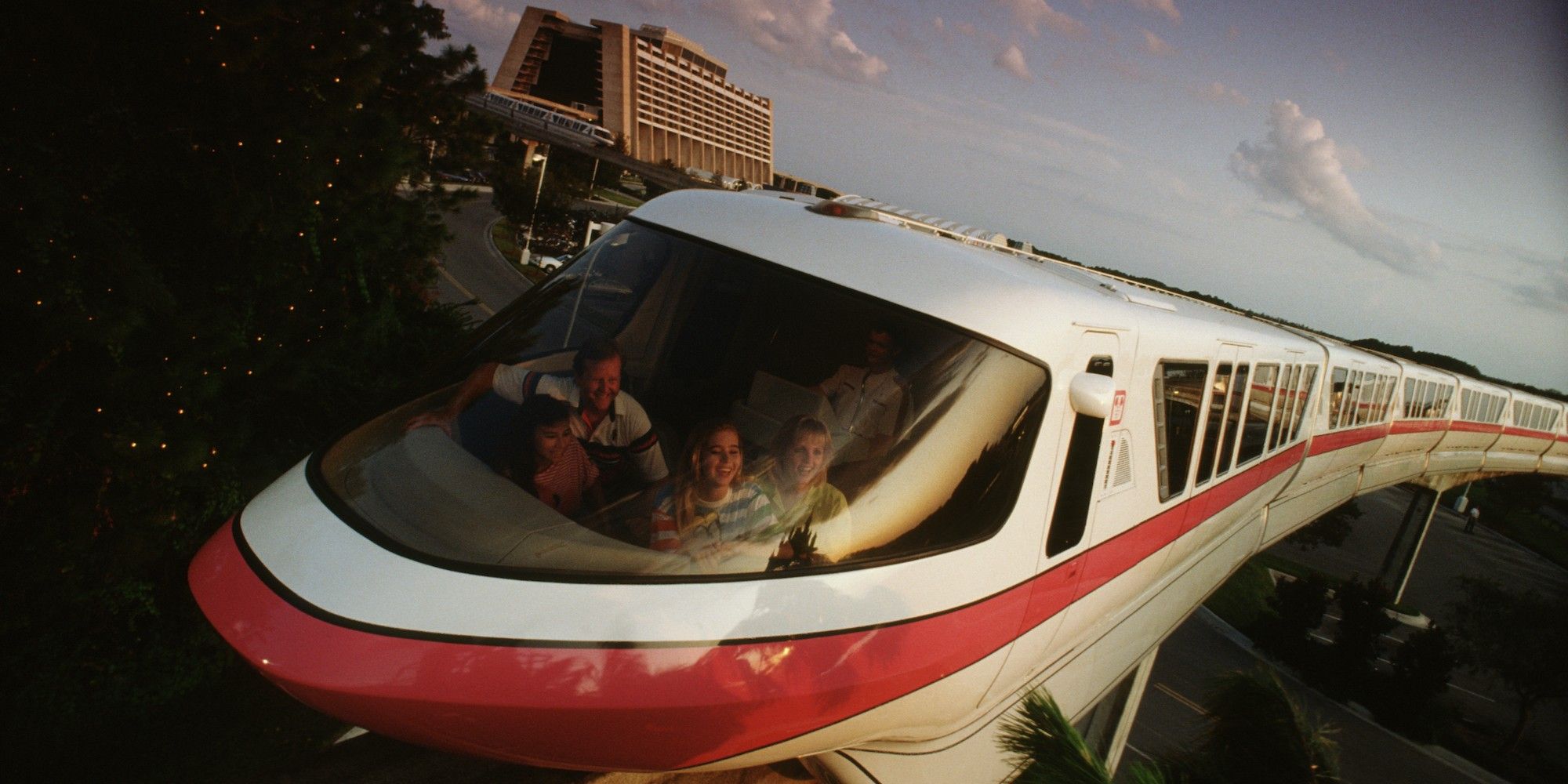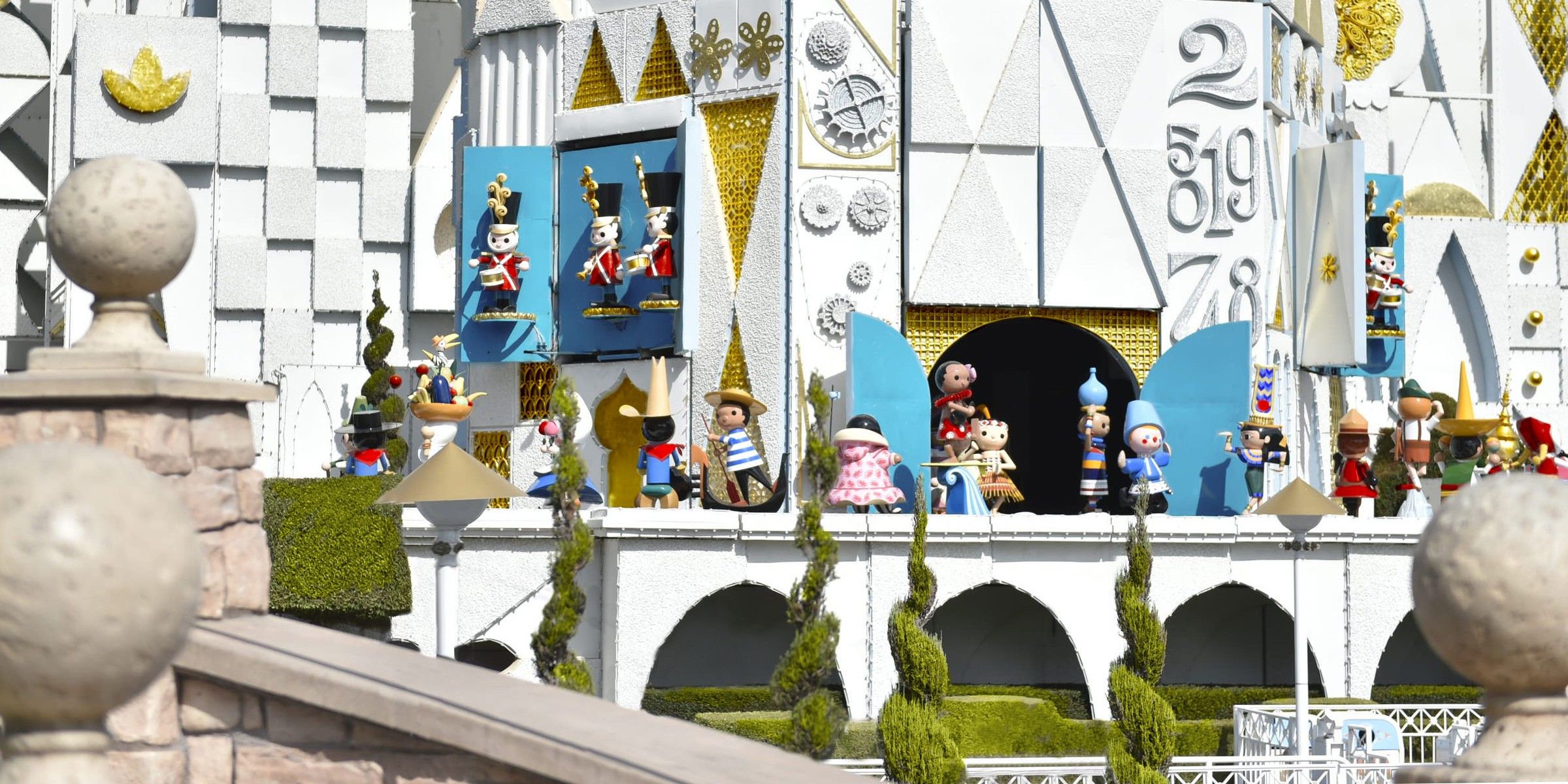Disney is taking viewers behind the stories and histories of its various world-class theme-park attractions with its new Disney+ series, Behind the Attraction. And while this process includes providing a veritable avalanche of details, facts, and anecdotes, it also involves another hugely critical component: the artwork and designs that went into the iconic ride, hotel, or castle’s development.
This is where Imagineer Vanessa Hunt comes in. An archivist and senior design asset specialist with the Walt Disney Imagineering Art Collection, Vanessa helps take care of the company’s more than 160,000 pieces of original and digital artwork – and helps provide those images to others who may need them, whether they be, say, a crew assembling a television series or museums who are putting the beautiful illustrations on temporary display.
While Vanessa didn’t specifically interface with director Brian Volk-Weiss or any of the other producers on Behind the Attraction, she did make an appearance in six of its 10 episodes, lending her insights to help audiences understand “it’s a small world” or the parks’ various locomotives and monorails. Hunt also works part-time as an author for Disney Publishing, putting together in-depth and exhaustive collections from the archive in book form.
Screen Rant got to sit down with Vanessa Hunt to talk about the history of Imagineering’s massive vault of artwork, how she came to be one of its caretakers, how its secrets can change our perceptions of Disney’s various rides, and whether transportation can still be called a mode of entertainment today, as Walt Disney himself enthusiastically did so many decades ago.
The conversation has been edited for clarity.
Screen Rant: I’m very interested in your position, actually, because I’ve done a little bit of writing about the history of Disney and Universal. So, I wanted to ask you first how, exactly, did your particular position come to be, and how did you come to inherit it?
Vanessa Hunt: Pretty interesting journey to get to where I am. I started with my local Disney Store about 20 years ago. I’ve always been interested in Disney history and the making-of and the artists and behind the scenes, so I knew I wanted to work for the company. That was my way to do it, in Northern California. I eventually made my way down here. I worked at the Studio Store on the lot in Burbank for a little bit, which was a lot of fun, getting to see behind the scenes there. And then there was an internship opening in what was then known as the Art Library at Imagineering. I interviewed for that role, I got the internship, and I’ve been there ever since – almost 15 years now. So, it was sort of a right-place, right-time situation with all my roles and making my way to Imagineering.
Gotcha. Do you know when, exactly, Imagineering started the practice of archiving everything?
Vanessa Hunt: It goes back to the beginning. Imagineering has always kept the artwork for the development of the parks. We’ve always done that. It probably turned into a proper archive of museum standards – I wanna say in the early ‘90s, so before I started there. We got a proper vault with a proper fire-suppression system and all that stuff to protect the artwork, but Imagineering’s always collected and documented and preserved the collection.
Interesting. I was gonna make the joke that your position kinda reminds me of a White House archivist – every last scrap of paper the president touches has to be preserved. Is that, essentially, more or less, what your job entails?
Vanessa Hunt: It is. We want that pencil sketch on a napkin or a rough sketch on a piece of tissue paper just as much as we want a beautifully rendered and finished piece [or] painting. It all tells a story – it shows the design evolution of an attraction or cruise ship or hotel, so it’s all important to capture. We do try to gather all that at the end of a project.
And that’s because, if I’m not mistaken, Imagineering has a tendency to kind of revisit old concepts and old designs to constantly try to incorporate those into new experiences. Is that right?
Vanessa Hunt: Yeah, sometimes it is. Some projects will come to us at the beginning, when they’re at the earliest phases of design, and will ask to see specific artwork because it maybe has an idea they want to incorporate into the new design, or they’re just looking for inspiration. Y’know, for a lot of people, seeing this Mary Blair art behind me [motions to the wall behind her, which is covered in "it's a small world" designs] is just inspiring even if you’re not gonna incorporate it into what you’re working on – it’s just neat to see what’s come before you and get a look at that up close.
How involved were you in providing all the different materials for the creation of this Disney+ series?
Vanessa Hunt: I personally was not involved in that. My coworker, Denise Brown, was the point person for this show. She was full-time on this show for about six months, just working on providing all the artwork files. In a lot of cases, we maybe have an older capture of the piece of art, so we’ll go into the vault, pull the original artwork, bring it to our photographer, and he’ll take a brand-new capture of it. Our goal is ensuring that what you guys are seeing when you watch the show looks like the original piece of artwork. We want it to look as good as possible, so a lot of work goes into making that happen.
I hate to admit this – that’s actually something that never crossed my mind. That’s a very interesting part of the whole process, I think.
Vanessa Hunt: Yeah, I think a lot of people – we have a database, and there’s artwork in that database, so people assume, “Well, I can see it there, so, therefore, that’s what it looks like. That’s the artwork – it’s ready to go.” And, in most cases, it’s not. Image-capture technology is constantly changing, so the captures we’re getting today are better than the ones we got five years ago. We’re actually constantly recapturing the artwork as it’s requested.
I think, generally speaking, the history of theme parks and attractions and what I call just immersion – to me, it’s very interesting because it’s, like, this cross-section of society and industry and creativity. What do you think has been the most interesting or rewarding part of your job over your years of doing it?
Vanessa Hunt: The most rewarding for me has been working on the books – because, with the books, we’re able to share the artwork with the world in a way that we normally can’t. The artwork has gone on exhibition around the world, but unless people can visit that particular museum, they’re not seeing it. But when it’s in a book, it’s available to anyone, and you can buy that, and bring it home, and stare at it. So, I think for my whole team, that’s something that’s really rewarding in that we get to share so much of the collection with so many more people through that method.
During that process, has that ever changed your perceptions or understanding of the attractions?
Vanessa Hunt: Definitely. It gives me the chance to take a deeper dive and to look at maybe all the artwork created for a particular attraction, rather than if you get a request for these two pieces of art, and that’s maybe all you look at. That’s normally how it happens. But when you’re working on a book, you’re doing a deeper dive and looking at everything to pick what images work the best for the story or history you’re trying to tell.
I also wanted to ask you specifically about the transportation episode [“Trains, Trams, and Monorails”], because I know you were featured in that. It really struck me, watching that, that Walt called transportation this “entertainment attraction” in addition to being this pragmatic mode of transportation. Do you think that’s something – and I know you guys just ended up doing the Skyliner in Florida not too long ago – but do you think that’s something that you could still today bill as entertainment? Or do you think our society has changed too much?
Vanessa Hunt: I think how we use transportation in the park is still entertainment, as well. Maybe there’s not a story being told in that mode of transportation, but you’re viewing the park or the resort in a different way when you’re riding that mode of transportation. It’s a different look. Like riding the monorail – it’s a highway in the sky, and you’re getting to see the parks from up above. And I always think that’s really exciting, to be on board the monorail and look down and see everything that’s going on from a different perspective.
Behind the Attraction premieres on July 21, 2021, exclusively on Disney+.


